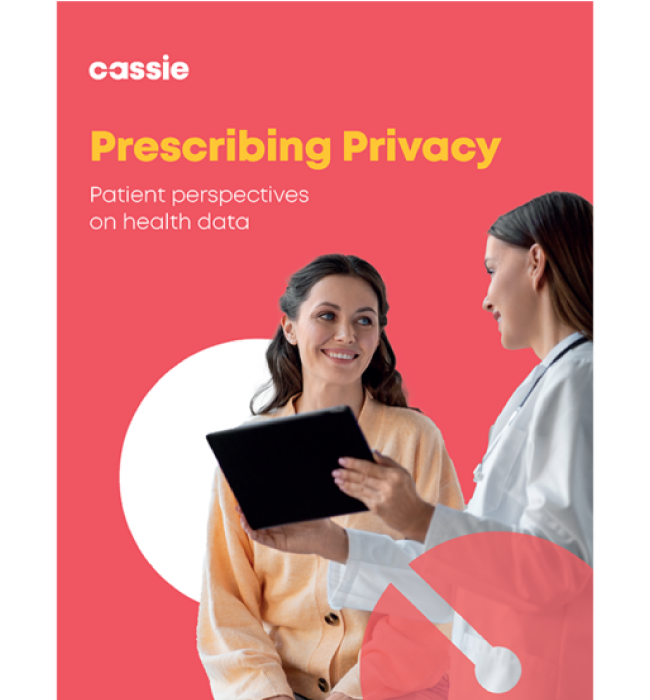Effective communication in healthcare: Balancing consent, compliance and trust
Posted: November 15, 2023
Effective communication in healthcare is a delicate balancing act between consent, compliance and trust.
Patients undergoing any medical procedures, surgeries, or clinical trials require providers to communicate risks and benefits to ensure they are well-informed. Well-informed patients can actively participate in decisions regarding their care and continue with medications and follow-up procedures.
In this context, before a patient agrees to undergo a treatment, it’s important to obtain their consent for legal and ethical reasons. For consent to be voluntary, the provider’s ability to communicate transparently and effectively significantly influences a patient’s decision-making process.
How effectively they communicate the risks, benefits, and alternatives of a medical intervention has a substantial impact on patient compliance, trust building, and balancing consent. Let’s understand how.
Significance of effective communication in healthcare
- Patients can comfortably communicate their complexities openly to receive effective treatments
- Care providers can convey treatment plans to patients in an accessible and clear form
- Patients can make informed decisions when they understand the risks, benefits, and alternatives associated with treatment
- Administrators and providers can handle sensitive patient information ethically and responsibly
- Responsive measures can be established to bridge communication gaps between stakeholders to avoid confusion
- Patients can thoroughly debrief privacy concerns associated with the information being shared, understand their rights, and consent to treatment accordingly
Strategies for ensuring clear and informed consent
Ensuring clear and informed consent involves providing patients with a comprehensive overview of a proposed medical intervention. With purposes, risks, and alternatives known, they can make informed choices as per their understanding and preferences.
While ensuring informed consent reflects a commitment to transparency, respect for patients’ rights to make decisions, and the promotion of patient-centered care, it also aids in ethical and legal reasons, which leads to patient compliance and trust building.
Legal considerations:
- Data protection laws under many jurisdictions, including HIPAA, that cover health-related personal data as well, emphasize the importance of respecting a patient’s right to autonomy and self-determination
- Autonomy and self-determination, in simple terms, mean empowering individuals to make decisions about their medical care that best suit their values, preferences, and well-being. Providers are required to communicate transparently and respect the personal values and privacy of patients
- When obtaining consent from minors, the age at which a minor can provide consent varies under different jurisdictions. If a minor is underage and does not meet the obligatory requirements, consent from a legal guardian is required to carry out the care.
For example, in the United States, minors aged 12–14 may consent to certain types of medical care (e.g. reproductive health services) without parental involvement. In the UK, the age for medical consent is generally 16. However, if a minor shows sufficient understanding and intelligence, he or she may be deemed competent to provide consent.
Ethical considerations:
- Patients should consent voluntarily, without coercion or undue influence. They should feel empowered to accept or refuse a proposed intervention without fear of negative consequences
- The active involvement of patients in the decision-making process enables them to make informed decisions. Healthcare providers should engage in active listening, seeking to understand patients’ perspectives. Open-ended conversations reveal a patient’s lifestyle, cultural beliefs, and personal priorities, which may influence treatment decisions. If providers have a clear picture of a patient’s perspective, they can ensure clear and informed consent, promoting trust in the provider-patient relationship
How to ensure clear and informed consent through communication
Make use of clear and simple language
Debrief patients to assess their health literacy and tailor the communication accordingly. If reaching out individually to patients is not possible, break down complex information into digestible segments. It makes the message accessible to a wider audience.
Provide written materials
When communicating with patients verbally, provide written consent forms as well, outlining key information in a clear and concise manner. For visually impaired patients or patients with limited knowledge of healthcare, supplement verbal explanations with written materials to reinforce understanding.
Discuss risks and benefits
Highlighting critical risks and benefits to patients helps them focus on the essential aspects of the undergoing procedure or treatment. Risks quantified using concrete numbers or percentages further supplement patients’ trust in the provider.
Document the discussion of risks and benefits, along with the patient’s understanding and agreement, in the patient’s medical record. Documentation legally protects healthcare providers, reinforces patients’ understanding of treatments, and promotes transparency.
It also enhances continuity of care by ensuring other healthcare professionals involved in the patient’s care have access to information about the agreed-upon plan and the patient’s acknowledgment of the associated risks and benefits.
Promoting adherence through effective communication
Patient adherence to the recommendations, guidance, or prescribed regimen significantly impacts treatment outcomes. While making sure care providers and patients reach a common goal, communicating details of the undergoing procedure in an effective manner also promotes patient compliance.
Communication is key to convincing patients that following the prescribed medications, treatment, lifestyle, and appointment are crucial for effective results. Care providers can promote adherence through the following strategies:
Establish a strong foundation of trust
Conveying clear and honest information about the patient’s health condition, along with stating the reason behind recommendations, fosters a trustworthy bond between provider and patient.
Providers’ demonstration of active listening to patients’ concerns and preferences, showing empathy and compassion toward the patient’s feelings and expressions, and involving patients in the decision-making process establishes a strong foundation of trust between the duo.
When patients find their feelings and experiences validated, as well as involved in the decision-making processes, they are more likely to adhere to the agreed-upon treatment plans and courses.
Provide clear and understandable information
Excessive use of jargon in communication often derails patients from adherence. Care providers should make use of plain language to help patients comprehend complex medical concepts easily.
For patients with limited medical literacy, supplementing verbal communication with illustrations such as diagrams, charts, and written materials enhances understanding and serves as a useful reference.
Sometimes, relating medical information to the patient’s daily life experiences, including short-term and long-term impacts, helps them quickly grasp the relevance of the treatment recommendations.
When patients grasp the significance of how adherence contributes to the upliftment of their well-being and quality of life, they are more likely to take ownership of their treatment plans.
Utilize technology for support
Technology can be a valuable tool in encouraging patients’ adherence. Providers can take advantage of various digital tools and platforms to enhance communication, provide educational resources, and facilitate ongoing monitoring and support.
How technology can be used to enhance patient adherence
Medication adherence apps: By implementing measures like reminder apps, providers can send regular notifications to patients, reminding them of their medication at the prescribed time. There are also some apps that help patients keep track of their medication dosage and schedule, for example, Medisafe.
Telehealth and virtual consultations: Telehealth platforms can help patients connect virtually with healthcare providers. Whenever patients feel the need for follow-up appointments and discussions about their treatment plans, they can virtually consult with specialists for additional insights, particularly when reaching a specialist in person is a challenge.
Mobile health (mHealth) apps: mHealth apps are designed to monitor and track various health metrics, including blood pressure, blood glucose levels, weight variation, etc. Patients can log and track their symptoms to receive personalized care plans from healthcare providers.
The significance of centralized consent in digital communication
All of this only works when supported by a comprehensive consent management strategy, and in turn, a consent management platform that’s capable of handling complex data across systems.
In order to deliver effective communication in healthcare, organizations need to implement software that can be adapted to meet very specific requirements. Whether it’s a patient providing consent to receive text message notifications, to acknowledging informed consent before surgery, having a centralized database that collects this consent is imperative.
Whilst this consent is already being captured, it’s likely across disparate platforms that don’t then share this consent. So for example, if a patient opts out of communication on a certain channel or app, this is not then reflected across other systems that they have access to. This can lead to frustration for the patient, who then believes their consent and preferences aren’t being actioned appropriately.
Healthcare providers need to consider how they both inform patients about the type of data they’re collecting and why at every stage of their journey, whether it’s from a website visit and collecting cookie consent, to sending them notifications about their treatment plans. As the patient likely touches multiple platforms, systems and touchpoints, it can be difficult for organizations to manage this from the top to effectively distribute consent downstream.
With 72% of patients fearing health data misuse, it’s more important than ever for providers to demonstrate that they care about consumer preferences regarding how they want their most sensitive data to be handled.

Download our ‘Prescribing Privacy’ healthcare research report
We spoke to U.S consumers to gain a clear understanding behind customer trust and the confidence that consumers have in the healthcare industry’s ability to safeguard their personal data. We explore:
- What factors influence the perceptions of how committed healthcare providers are to protecting data
- How news-reported data breaches impact customer feelings
- How customers evaluate healthcare providers for data security
- Actions that providers can take to build customer trust whilst navigating the complexities of data privacy

